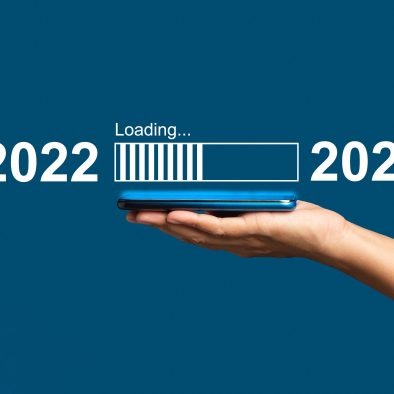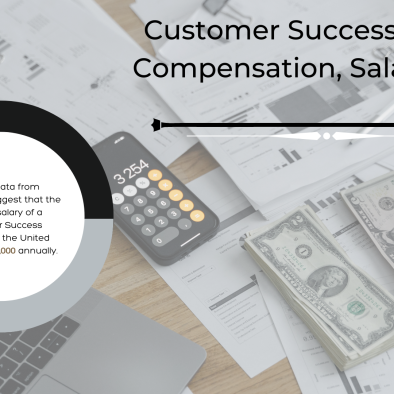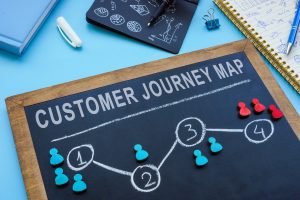Newsflash: Markets are unstable, inflation is high, and it appears that a recession is certain. Even while it could seem like the end of the world, or at the very least extremely frightening, it has occurred before and it will happen again. One thing we can take away from each time this has happened is that there has been a significant increase in digital use, especially in B2B businesses.
Whether we prefer to admit it or not, one of a business’s biggest expenses is its employees. The more productive people are able to become, the better they will be able to support the company during hard times. Think about how much longer it would take an analyst to analyze your customer data using spreadsheets as opposed to a business intelligence (BI) tool. If your customer success team had to manually keep track of all customer interactions and renewal dates rather than automating that process with customer success software, think about the effect that would have on retention. Implementing additional software can frequently result in lower total spending and turnover rates.
Here, I’m not advocating impulsively purchasing technology to address issues. The majority of us undoubtedly have a lot of technology that is unnecessary. If you currently have manual processes that can be automated, now is the time to do it, in my opinion. You need a robust platform that lets your team be dynamic and wear multiple hats. Where CS struggles the most is automating its processes to be more efficient. Let us talk a little bit about how automating can help you scale during the uncertain times that we are living in now.
Why is Customer Success Automation crucial to scale?
It can be challenging to keep track of each milestone, client encounter, and escalation. Particularly if you have thousands of clients. As a SaaS business, managing your client’s success is a painstaking process. Poor customer service or experience costs SaaS companies around the world a significant portion of their revenue. Even if everything can be managed flawlessly right now, how do you align for growth in the future?
In this situation, automating Customer Success is useful. Most of these bad contacts might easily be resolved using customer success automation. Like other features, customer success automation attempts to improve and streamline business operations.
To put it plainly, customer success automation aids the customer success manager in the:
- Reduces expenses,
- Client wait times,
- Minimize human errors
- Pay attention to the more crucial and challenging tasks.
Let’s examine what scaling a customer success team should look like during a recession.
Scaling CS teams
It’s crucial that you keep asking this question as you scale your customer success program: Will this have a positive influence on the client’s adoption and success with our tools?
The initial point of contact is the customer success manager, who is entrusted with working with clients during their onboarding and ongoing administration of your product. encourage adoption and empower your power users by staying in touch with our consumers through constant touchpoints.
You can also prioritize segmenting your books of business and processes to identify where you should be devoting one-on-one time and where a one-to-many approach can be used most effectively in order to do so successfully and at scale. Your goal is to adjust to the various consumer needs while effectively using your resources. The most important thing to remember is to track the results of these touchpoint changes and iterate quickly as needed.
When thinking about one-to-many services, it’s crucial that we constantly modify your products to improve the customer experience and that you put the needs of the client first.
Balancing Customer Success Automation and Human Touch
Most of your internal automation efforts should be focused on improving the effectiveness and efficiency of the customer success managers’ everyday tasks. These automatic initiatives include messages on workspace usage, caution about health score decreases, and important customer account reminders. These notifications are used to influence your churn risk mitigation plan and direct the customer success manager toward important priority areas for forthcoming interactions.
Be deliberate about how you utilize automation externally since eliminating the human approach can harm your customer success managers’ capacity to foster relationships. It could also harm the customer experience. Right now, a partial automation strategy is the most effective; by automating time-consuming internal chores, we give your customer success managers more time to concentrate on clients.
This strategy is applied by customer success teams around the world.
What can you automate with good CS software?
Adoption of Features, Usage Monitoring, and Progress Monitoring
You should be able to observe which features the customer is currently using and which ones are producing the greatest results in order to upsell and cross-sell new features. Use the CS software available to create internal monitoring dashboards. It can provide you with a complete picture of how each account is using its features. Once you know who your heavy users are, prospective new champions, and training opportunities exist within the customer’s account, you can increase utilization and add value throughout the customer’s business.
Dashboards and other tools increase your exposure and can generate a report on how users are utilizing your platform or product. These reports can be totally automated by using a CS platform, which will drastically minimize the work needed to collect the necessary data. This will enable you to examine the data more quickly and move on to the following phases more quickly.
Making notifications for your email or Slack is another technique, in addition to using tools and dashboards, to be proactive and productive. These alerts will let you know about users of new features or inactive users who haven’t signed in for some time, enabling you to take proactive measures to avoid potential churn.
Customer Success Automation 101: Data Curation for Customers
To boost product utilization, lower churn risk, and raise task productivity, it is essential to map out your customer’s organizational structure.
Each customer’s organizational matrix is distinct, but the challenge can be keeping them current as your firm expands and you take on new clients. Prioritizing the updates to a customer matrix can be useful since it can prevent the updating of the customer matrix from becoming more of a secondary task. Setting a reminder or scheduling time once a month to update matrices can help you be productive with these adjustments and ensure that you and your management have an accurate “customer profile” page.
Health Score
Analyzing numerous forms of data, such as product-feature usage, license utilization, financial health, open support tickets, survey information, and so on, is necessary to gain a true picture of how a client is using your product and extracting value. The problem is that these data are spread across numerous systems because organizations frequently use different solutions for CRM, support, and billing. The CSM’s first job is to gather all of this data in one location and then analyze it to determine whether the client is making progress or is in danger of churning in real-time.
Automatic health score calculation is quite useful in this situation. Products like Reptrics analyze all of these client data points and integrate them with all of your third-party solutions. If any anomalies are found, CSMs are alerted so that action can be made before it’s too late.
Additional Resource- Ultimate Guide to Customer Health Scoring
Beginning client onboarding properly
Make sure the customer success manager is informed as soon as a new account is assigned so they can get in touch right away to begin the customer relationship. Don’t procrastinate Sales to Customer Success handoff because you don’t want to lose the customer’s enthusiasm and drive. Create an onboarding path to automate your following procedures in order to establish clear client expectations from the outset and generate a good first impression. Time-bound activities set for you and the salesperson should be part of the first journey milestone.
No matter what SaaS company you work for, you will always need to onboard customers promptly because it is a crucial component of the customer’s success.
There are 4 stages in the onboarding process:
- Onboarding Call
- Training
- Implementation
- Review of Product Onboarding
The amount of time required for each stage can vary based on the customer and their requirements, but adopting playbook templates is one approach to speed up and effectively complete the numerous onboarding activities. No matter where the customer is in the onboarding process, playbooks are simple to duplicate and alter rapidly with a variety of changes to match their demands.
Wrapping Up
The role of Customer Success in the growth of any B2B SaaS is undeniable right now. 2023 is gonna be a make-or-break year and it is critical to make CS efforts effective. Whether you are a director or a CSM, automation and good customer success software make your life so much easier. If you have any questions about automation, you can talk to us as your customer success experts! Reptrics is always here to help.









